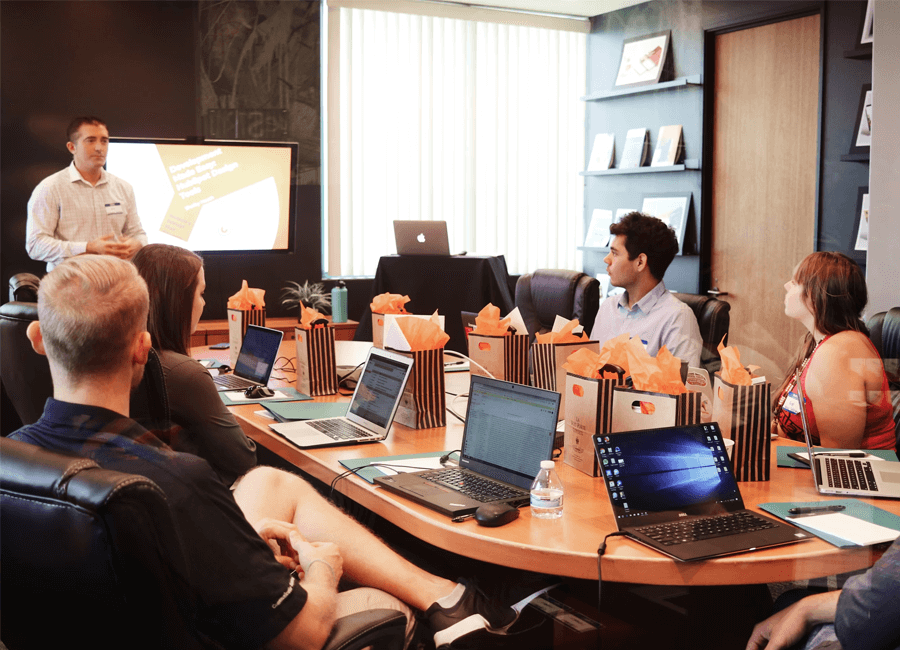The Customer is King. That’s the mantra of a market economy. It is the customer that decides what gets produced – and what doesn’t – depending on how and where they spend their money. The almost-Darwinian principle of survival in a market economy is that unless you produce and serve what the customer wants, your business will fail. And so, every business has to put the customer at the centre of everything they do, because if they don’t, they risk failing.
However, the reality is very different. The rhetoric of ‘customer closeness’ or ‘customer centricity’ is vast and yet, still, businesses talk-the-talk more than they tend to actually walk-the-walk. Customers are spoken about - a lot - yet their voices are not always efficiently heard. It seems that the ‘process’ of customer insight makes it much harder to actually ‘live and breathe’ the customer.
The Power of Customer Insights
If the customer is to be king in your organisation, you have to make them central to every conversation and every decision. Doing this without an unlimited budget might sound impossible, but it doesn’t have to cost vast sums of money when it is truly part of the culture. It only costs a lot when it is kept at arms-length by ‘buying it in’ or inviting others to tell us about the customer.
Instead, we have to empower everyone in the organisation to be able to use insight effectively themselves. This means everyone has to be able to articulate who their customers are, what they want and how the organisation benefits them. Each employee has to feel empowered to talk about the customer and empowering them to confidently use insight is central to enabling them to do that.
| Tweet This | |
| How do we unlock the power of customer insights within a business? We have to empower everyone to be able to use the insights effectively in a team and by themselves. |
The 3 Challenges to Insights Empowerment
Our clients tell us how challenging it is to increase the efficiency, reach and influence of insight, whilst simultaneously not blowing the budget. So how can we do things differently? Successful firms create a culture of insight and not a ‘process’ for insight, meaning that we need to approach this with a mindset of cultural change. There are three central pillars to empowering your organisation to use insight:
Efficiency
If everyone is going to be empowered to use customer insight in every decision across the business, then we’re going to have to set things up to be highly efficient. If every decision requires big projects, outside consultants or specialist tech, then clearly, it’s going to be very costly.
To ensure every decision revolves around the customer – and make them king – we have to make the process of collecting customer research and data as lean as possible. We need to think about the ways it is collected and analysed, not just in terms of cost, but also the time it takes. Making processes lean can be hard, because it often challenges the conventions and norms that have grown up around each one. I’ve found that there are three questions you can use to challenge yourself to make sure you’re pushing to break down conventions and become leaner:
1. Do we use lots of different technologies and agencies to fulfil our needs?
If so, this can create overlap, increase costs and eat up resource in managing, reviewing and using. You really need external partners to be lean; the adage of simple and quick matters.
2. Does the speed of research deliver to business expectations?
This is really hard, since expectations can sometimes be unrealistic and meeting them can reduce quality, but if people can’t get their hands on the insights they need when they need them, then there are ways to fix it – either speed up the research or educate people in what insights they can and when they can. Approaching from both angles can really help. Think about which insights are regularly needed or repeated and which are more tactical ‘questions’ than strategic ‘deep dives’. Educate around each to align speed and quality trade-offs.
3. Do all research requests get answered and delivered to expectation?
If every decision is informed by insight, then the answer to this question has to be positive, but if we’re not able to meet all necessary needs then the customer can’t be present in all decisions. This can be about increasing resource, making processes leaner or empowering others to collect and use insight themselves. Finding agile solutions to frequent requests is critical.
Reach
If we’re going to empower a new culture of insight, then considering the reach of insight is very important. A culture that has the customer running through every meeting and every decision has to be one that embraces insight in every corner of the organisation. A practical way of thinking about this is: how far and wide does the customer voice get in the organisation? Is it reaching everyone? Again, it helps to evaluate this by way of three really simple questions to challenge yourself on:
1. Is research used in a high number of decision points across the organisation?
This is the measure of how far-reaching insight is at the moment. Be critical when assessing this. If research isn’t being used in many decision points, then reach out to different teams and stakeholders and ask them why not; what are the barriers to using insight? What will help them use it more? Evaluate their skills and see where gaps lie so that they can be addressed with training. Then think about how insight can support them in the future and maybe return back to the evaluation of Efficiency to see how capable the existing systems and processes will be.
2. Can stakeholders can readily access research at the point of their decision making?
Making it easy to access insight at the point of decision making is crucial but often over-looked. We don’t often stop and challenge ourselves to think about where and when decisions get made, but we need to because that’s where access matters. How can we support insight being readily available at these points? What extra training or tooling might be needed to empower this? Can I delegate access to existing tools with extra training and support?
3. Do the research team have a strong relationship with all business units?
Strong relationships and connections matter if insight is to run strongly through the organisations. Think of the connections between teams as being the ‘veins of the organisation’ along which insight needs to flow effectively. Put strategies in place to improve these connections; meetings, Town-Halls, virtual collaboration, workshops etc.
| Tweet This | |
| Empowerment means giving everyone the authority and power to do something, but how to we empower insights with the challenges businesses face today? |
Influence
It is one thing that customer insight reaches everyone, but once there does it get used and acted on? This seems easier than it actually is. To ensure customer insight actually influences decisions means we have to empower everyone in the organisation to know how to use it, which in turn requires them to confidently assess data, know how to use it and assess whether actions get taken. It helps to take a step back and think about how colleagues interact with and around customer insight:
1. Do people value the input of research and insight in their decision making?
People need to value insight and understand it’s purpose and how it empowers them to talk about the customer. They need to know that the Customer is King and they are empowered to use insight to make their decisions more customer-centric. This is a hearts-and-minds campaign but it matters in the long-run for people to feel confident and empowered.
2. Are people confident in using insight and acting on it?
Confidence is not just knowledge-based but skills-based, too. Evaluate your colleague’s skills and abilities to collect and use insight. We should evaluate their ability to talk to customers, ask questions in the right way, their numeracy and ability to use data, spot patters and then effectively take actions. Work on their skills with the support of regular workshops and immersion strategies if they don’t have the ability or means to talk directly to customers. Think about the skill sets that drive action-setting, or activation, to use another buzz-word!
3. Is research having a measurable impact in a lot of business decisions?
And lastly, measure the impact and influence that insight has. This can be a financial figure, business-led metrics such as reducing churn or increasing satisfaction, or they can be softer measures of awareness, confidence and abilities of the business teams, evaluating how empowered they feel and how much they walk-the-walk.
In the End…
Empowerment means giving everyone the authority and power to do something; in this case it is the ability to talk about customers confidently and make decisions as a result. Customer insight is central to making this happen and so creating an empowered culture of customer insight is the foundation of making the customer king in your organisation.


















